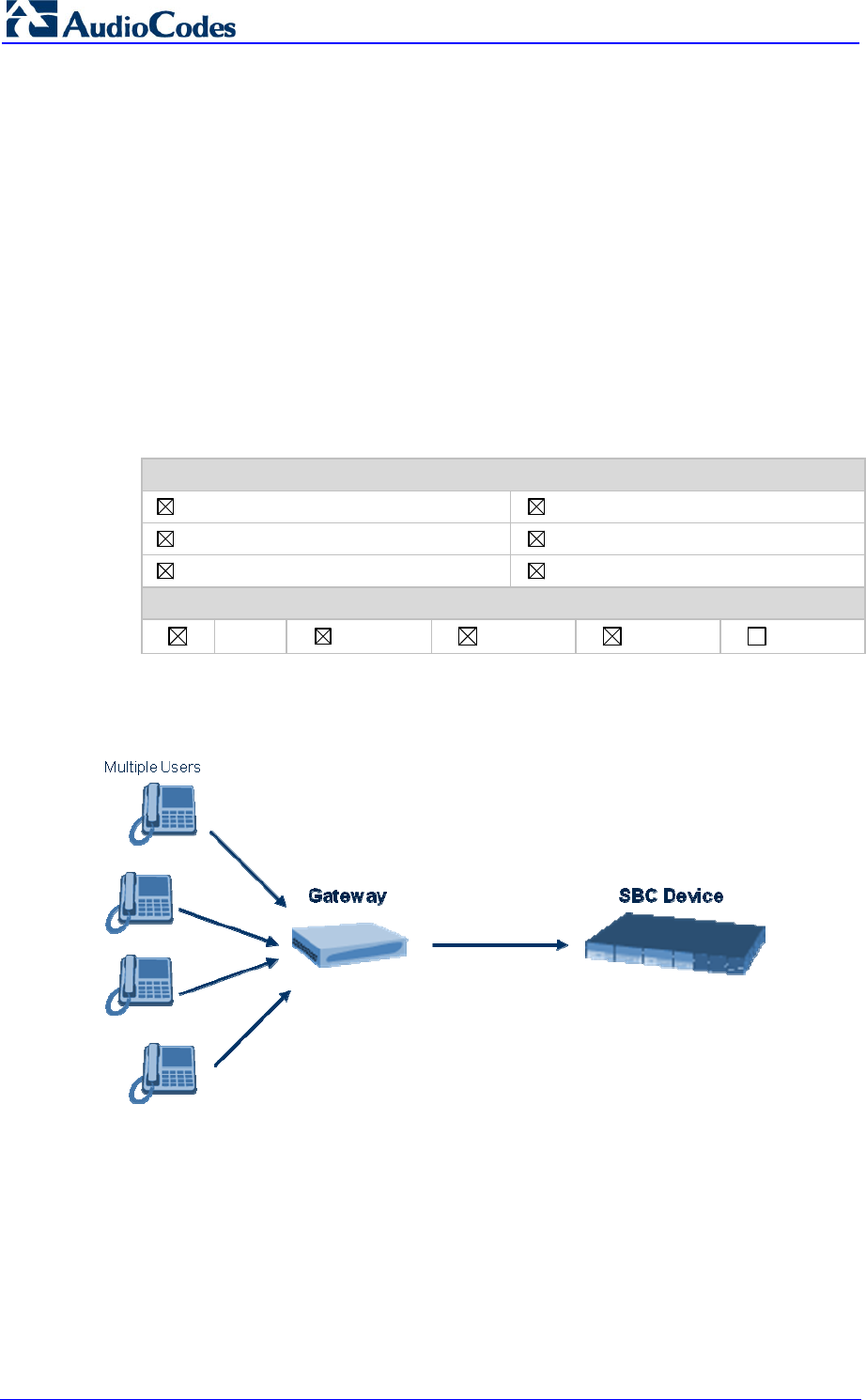
SIP Release Notes 60 Document #: LTRT-26901
CPE SIP Products
♦
If the REGISTER is per the device’s client (endpoint), it is the MAC address
concatenated with the phone number of the client.
♦
If the REGISTER is per device, it is the MAC address only.
If the remote server doesn’t support GRUU, it ignores the parameters of the
GRUU. Otherwise, if the remote side also supports GRUU, the REGISTER
responses contain the “gruu” parameter in each Contact header. This parameter
contains a SIP or SIPS URI that represents a GRUU corresponding to the UA
instance that registered the contact. The server provides the same GRUU for the
same AOR and instance-id when sending REGISTER again after registration
expiration. RFC 5627 specifies that the remote target is a GRUU target if its’
Contact URL has the "gr" parameter with or without a value.
• Using GRUU: The UA can place the GRUU in any header field which can contain
a URI. It must use the GRUU in the following messages: INVITE request, its 2xx
response, SUBSCRIBE request, its 2xx response, NOTIFY request, REFER
request and its 2xx response.
13. New IP Group Type “GATEWAY”:
Product
Mediant 800 MSBG Mediant 1000 MSBG
Mediant 3000/TP-6310 Mediant 3000 HA/TP-6310
Mediant 3000/TP-8410 Mediant 3000 HA/TP-8410
Management Protocol
Web INI
SNMP
EMS
CLI
This feature provides support for a new IP Group type–“GATEWAY”–defined in the IP
Group table (IPGroup parameter). This is used for scenarios in which the SBC device
receives requests to and from a gateway that represents multiple users, as shown
below:
In previous releases, the IP Group could be defined as one of the following types:
• SERVER: Used when the destination address (configured by the Proxy Set –
ProxySet parameter) of the IP Group such as an ITSP, a Proxy, an IP-PBX, or an
Application server is known.
• USER: Represents a group of users (such as IP phones and softphones) where
their location is dynamically obtained by the device, using the SIP Contact
header, when REGISTER requests and responses traverse (or are terminated) by
the device. These users are considered remote (far-end) users.


















